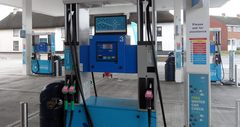Buildings in the Green Belt that do not have a significant visual impact or materially harm the character and appearance of the area can be acceptable in planning terms. The High Court made that point in a case concerning the unauthorised extension of a petrol filling station.
 The station consisted of fuel pumps, covered by a canopy, together with coffee and food outlets and a convenience store. Its owner carried out works to extend the shop and to provide a storage area without planning permission. The local authority refused to grant retrospective consent for the development and the owner’s appeal was subsequently dismissed by a planning inspector.
The station consisted of fuel pumps, covered by a canopy, together with coffee and food outlets and a convenience store. Its owner carried out works to extend the shop and to provide a storage area without planning permission. The local authority refused to grant retrospective consent for the development and the owner’s appeal was subsequently dismissed by a planning inspector.
In her decision, the inspector accepted that the development amounted to limited infilling of a previously developed site, within the meaning of the National Planning Policy Framework, and that it had not adversely affected the character and appearance of the site or the relevant part of the Green Belt.
However, she ruled that the increased floor area and volume of the station would have a slightly greater impact on openness than had previously been the case. Although the development would to some extent be screened by existing buildings, a lack of visibility did not, by itself, mean that there would be no loss of openness.
In upholding the owner’s challenge to that decision, the Court found that a greater impact on openness must involve something more than a mere change of environment. Given the absence of material visual intrusion, the inspector was required to exercise a judgment as to whether the increases in the scale and mass of the existing buildings had a harmful impact on openness.
The inspector had approached the matter on the erroneous assumption that any change had a greater impact on openness, rather than considering whether any material impact or harm had in fact been wrought by the change. The inspector’s decision was quashed and the matter was sent back to the Secretary of State for Communities and Local Government for reconsideration.

